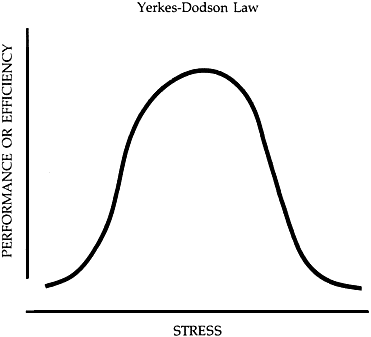Burnout: An Occupational Hazard
Is the concept of burnout a
scientific diagnosis, an excuse or a description of stressful conditions
that have gone on too long? We would suggest the latter, because
burnout is simply a description of the condition of people who have
become discouraged, depressed or have developed a sense of hopelessness
about being able to alleviate stress. Another way to think of burnout is
as the logical conclusion of stress over a long period of time.
Conditions Leading To Burnout
Unrealistically high expectations for oneself
A sense of powerlessness in being able to remedy problems in the workplace
Experiencing a lack of support or encouragement from supervisors
Preoccupation with work and putting in long hours to the exclusion of outside activities.
Symptoms Of Burnout
Works long hours with an assumption that more time on the job will ease the stress
Exhaustion/fatigue—constantly feels tired and lacks energy
Dreads going to work each day
Loss of appetite, frequent illness and muscle tension
Impatient and irritable with people at work and at home
Inability to concentrate and a decreasing quality of work
Negative, cynical and hostile attitudes toward others, particularly superiors
Loss of self-esteem and self-confidence
Blames someone else when things go wrong.
Who Is Most Likely To Experience Burnout?
Best employees; dedicated workaholics
Those
in mid-years (dealing with unfulfilled dreams, living up to others’
expectations, disillusioned about what life is all about)
Those
who feel “caught” (feelings that are related to financial security,
location changes, fear and/or the threat of unemployment).
The Most Important Role For Managers In Dealing With Burnout
Managers should strive to create a climate within the work situation where:
Negative feelings can be expressed.
Supervisors are provided training and support.
An opportunity is provided to understand employees as people.
It is possible to achieve realistic goals.
The reward system includes recognition for achievement.
Possibilities for staff realignment make it possible for job change, either temporarily or by way of promotion.
A career counseling program allows employees to talk about their own career goals.
A
continuing education plan is made a part of each employee’s career
objective. This allows for new knowledge, training and redirection in
one’s career.
Some Stress Is Necessary
While too much stress can
have a negative personal impact, an appropriate amount of stress is an
important part of being an effective person and employee. Without some
stress, many of us would not bother to even get out of bed each morning.
A certain amount of stress helps most of us stay on our toes and
motivates us to achieve a standard of excellence that is a powerful step
in promoting self-esteem. Finding a level of stress that is helpful in
producing good results yet does not become debilitating is the goal.
The Yerkes-Dodson Law
diagram below shows a bell curve that recognizes the stress level in one
direction and efficiency or performance in the other. Each of us needs
to find the level of stress that is most effective for becoming quality
persons and quality employees. Optimum efficiency and optimum stress
will vary for each of us, so there is no “right” standard. Finding our
ideal is an important dimension so that we will be able to use the appropriate amount of stress in our lives.

Reprinted by permission of Harvard Business Review.
An exhibit from “How Much Stress is Too Much?” by Herbert Benson and
Robert Allen (September/October, 1980). Copyright © 1980 by the
President and Fellows of Harvard College; all rights reserved.